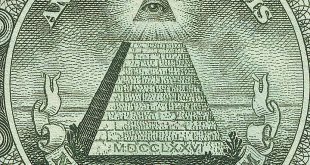Words can be interpreted in different ways. The same does not apply to numbers. Numbers are just numbers, and that’s it. Statistics from the year 2012 show that Portugal imports about 80% of the energy it consumes. Most of this comes from fossil fuels such as oil, coal and natural gas. There should be more arguments against these facts so that the situation could become more environmentally friendly.
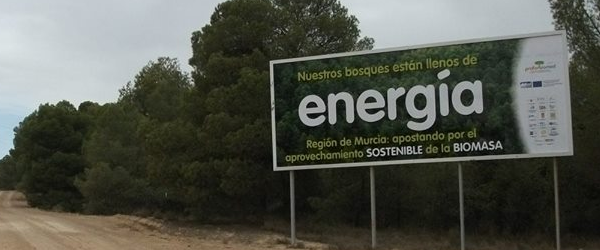
Some countries in Europe have taken great strides forward in ecological terms, in particular Germany, which now produces about 8% of its energy from biomass. What don’t we do the same in Portugal? And at a regional level, especially in the Algarve, a place that faces so many problems in terms of forest fires…What has been done to avoid disasters on such a scale? It is here that our report begins: controlled forestry management and the wealth of biomass. But what exactly is biomass? (see interview).
Not very far from Monchique – to be specific in Loulé exactly 82.9 km away – we went to meet the team from the Centre for Research in Environmental and Business Sciences, referred to below as CICAE. This centre is part of INUAF (the Dom Afonso III Higher Institute) and, together with ALGAR, the Algarve company responsible for waste recycling, and ICNF, the Institute for the Conservation of Nature and Forests, it was a partner of PROFORBIOMED, which is a strategic MED project (co-financed by the European Union) connected with the promotion of renewable energies through the use of forest biomass, and so we wanted to find out more. It was at INUAF that we talked a bit about this project which ran for four years (2010 – 2014) and about the projects that were implemented. The sum of 5.5 million euros was provided for six countries: France, Greece, Italy, Slovenia, Spain and Portugal through 18 local partners. The share of this investment allocated to the Algarve was approximately €300,000 for each of the three regional bodies (CICAE-INUAF), ALGAR, ICNF), the third of which did not use the amount available. The project was 75% financed by the MED programme.
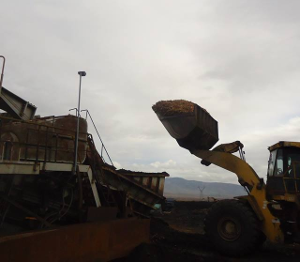 At the meeting, we became aware that the management of forest biomass has to be well studied in advance. There are important steps that have to be taken that will determine the success of any project implemented in this area. Following an assessment of the potential of the forest biomass, one of these is a logistical analysis. Matters such as calculating the time per journey, as well as the costs of transport, are key for effective structuring. We were told that the ideal place for establishing a centre for collection, parking and distribution is Monchique. One will already be created in the area of Porto de Lagos, an Algar facility that already has a logistical network outlined. At the moment, an association is being created with other participants who have already set in motion agreements with all the Algarve municipalities in order for them to collaborate on the implementation of a network of contacts for buying and selling the biomass to be produced in the region.
At the meeting, we became aware that the management of forest biomass has to be well studied in advance. There are important steps that have to be taken that will determine the success of any project implemented in this area. Following an assessment of the potential of the forest biomass, one of these is a logistical analysis. Matters such as calculating the time per journey, as well as the costs of transport, are key for effective structuring. We were told that the ideal place for establishing a centre for collection, parking and distribution is Monchique. One will already be created in the area of Porto de Lagos, an Algar facility that already has a logistical network outlined. At the moment, an association is being created with other participants who have already set in motion agreements with all the Algarve municipalities in order for them to collaborate on the implementation of a network of contacts for buying and selling the biomass to be produced in the region.
In the course of the discussion, we analysed the different studies that were carried out by the teams, in particular the studies of the economic viability of the use of residual forest biomass, as well as the guide for supporting investment and other publications devoted to the analysis of the different target species throughout the Algarve. Here, they explained to us that the forests are not to be destroyed, but rather to have certain forest resources removed that will benefit society and not harm the environment. On the contrary.
According to the National Forestry Inventory (2010) and the Algarve land occupation map (1995), eucalyptus and cork-oak were the species that occupied the biggest area. In third place came the stone pine, followed by the strawberry tree and the maritime pine. Carob trees and holm oaks occupy a smaller area. Let us look at one of the situations in the forests of Monchique. At present, we are witnessing the invasive growth of the acacia species. According to the 6th National Forestry Inventory, quoted by the ICNF (2013), this species occupies an area of about 100 hectares in the Algarve. Seen from the point of view of biomass, this species could be controlled through thinning or actual felling. In this way, its unrestrained propagation would be controlled. Studies carried out on two samples of biomass from the acacia, by the Association of Forestry Producers of the Serra do Caldeirão in that upland area, estimated total productivity for the region of between 7,675 and 13,292 tonnes per year. It is interesting how studies of this species also indicate the presence of sterols and sugars. The branches of mimosa trees contain a large quantity of palmitic acid (which is used in creams and cosmetics). Inositol was also discovered there; this is a sugar that is apparently important for mental problems. Who would imagine that the tree that delights us in the spring with its yellow blossom contains alcohols that are used in medicine and pharmacy to prevent illnesses such as Parkinson’s. Moving on from science and medicines, let’s return to questions of energy. The biomass of Acacia Sp. has great potential for being used as a source of renewable energy. Average values of 3,500 to 4,650 Kcal/kg were observed, and its processing into pellets to a large extent facilitates its storage and transport. But what exactly are pellets? They are produced from residual biomass, in other words the material that comes from tree trunks and bark, branches and leaves. This residue is dried, shredded and processed. The result is cylindrical granules that are 6/8mm in diameter and 10/40mm in length. Its quality is determined by moisture, ash, bulk density, mechanical durability and by the quantity of fines. According to the study carried out under the Proforbiomed project, and allowing for losses of raw material of about 30%, the conclusion was that, based on market prices for consumers, the cost of each 15 kg bag of pellets is around €4, or about €0.266/kg.
The biomass plants thus represent a possible stimulus for the development of rural areas. By alleviating problems such as the depopulation of the interior, as well as minimising the risk of forest fires, and making civil parishes independent through income generation, and all in a sustainable and ecological manner, it can be concluded that the current outlook could rapidly be transformed in the near future.
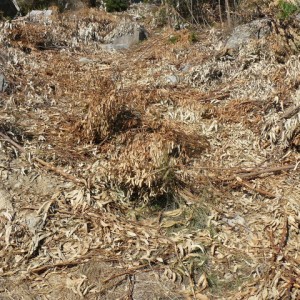 It is important to point out that there is at present one Algarve municipality that has converted the heating system of its municipal swimming pools. We are talking about S. Brás de Alportel. By investing €91,000, it has already seen a return on its investment in less than 20 months. It currently spends €58,000 per year, equivalent to a 60% reduction in costs. In the past, it used to spend about €93,000 on heating oil, and now it spends just €35,000 by using pellets. The water heating system consisted of two 280kW oil-fired boilers, complemented by a thermal solar system with 126 solar panels, which remain in place. It is an excellent example of minimising one’s ecological footprint, and one that could be repeated in the other Algarve municipalities. The low cost of this raw material and the efficiency of the boilers contribute to the fact that this is the most economical way to heat the municipal swimming pools, and perhaps the same applies to other public organisations such as hospitals, health centres, homes for the elderly, and many others.
It is important to point out that there is at present one Algarve municipality that has converted the heating system of its municipal swimming pools. We are talking about S. Brás de Alportel. By investing €91,000, it has already seen a return on its investment in less than 20 months. It currently spends €58,000 per year, equivalent to a 60% reduction in costs. In the past, it used to spend about €93,000 on heating oil, and now it spends just €35,000 by using pellets. The water heating system consisted of two 280kW oil-fired boilers, complemented by a thermal solar system with 126 solar panels, which remain in place. It is an excellent example of minimising one’s ecological footprint, and one that could be repeated in the other Algarve municipalities. The low cost of this raw material and the efficiency of the boilers contribute to the fact that this is the most economical way to heat the municipal swimming pools, and perhaps the same applies to other public organisations such as hospitals, health centres, homes for the elderly, and many others.
The effectiveness of using pellets is clearly shown if it is borne in mind that it represents a saving of about 50% in the cost of heating when compared with natural gas.
Now let us analyse what is needed to set up a pellet factory in order to obtain reductions of 95% in CO2 emissions as compared with fossil fuels:
- Identify the location of the raw material and the location where the final product will be distributed. The choice of site is very important: it needs to be level and quite large. There needs to be easy access and have a nearby electricity supply.
- The size needs to be calculated in relation to the quantity of raw material and the amount of investment available.
- The processing unit has to comprise: hoppers; buffers; dryers; control zones and an operating room with software.
- A technical team comprising a forestry engineer, an electromechanical engineer and an electrotechnical engineer.
- Certification can be obtained at: www.anpeb.pt
For the sake of the environment, attention should also be paid to the levels of noise and emissions. Another detail is that the costs of drying must also be calculated as this factor varies depending on the time of year. Finally, the machinery should be locally sourced if possible because any technical backup or adjustments that are needed should not be too far from the factory site.
In technical terms, to install a factory producing approximately 50,000 tonnes per year would require a team of three to four people per shift, and a plant of about 2,000kW in an area of approximately 25,000m2. The normal length of time needed to build a plant of this size is 18 months on average, until production can begin. In summary, a plant processing 50,000 tonnes per year would produce around 25,000 tonnes of pellets. This is because when the wood comes to the plant as logs, it contains about 45% in moisture, which has to be reduced to 10% through the drying process. The so-called residue is then turned into biomass for burning which goes into an oven after being shredded to obtain hot air for the dryer.
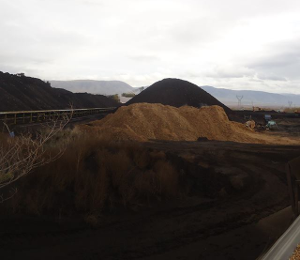 But the biomass plants do not only produce pellets for heat production. There are cogeneration units which are systems that combine heat and electricity and in which electricity can be produced independently, unlike wind and solar systems which are limited by natural and climatic factors. In these plants, steam drives a turbine to produce electricity. However, there are also other uses of forest biomass, such as firewood, and the extraction of compounds with added value such as oils and essences that are used in the cosmetics, pharmaceutical and food industries, for example.
But the biomass plants do not only produce pellets for heat production. There are cogeneration units which are systems that combine heat and electricity and in which electricity can be produced independently, unlike wind and solar systems which are limited by natural and climatic factors. In these plants, steam drives a turbine to produce electricity. However, there are also other uses of forest biomass, such as firewood, and the extraction of compounds with added value such as oils and essences that are used in the cosmetics, pharmaceutical and food industries, for example.
How much does it costs to set up a biomass plant for manufacturing pellets?
According to the latest project co-financed by the NSRF for setting up a pellet plant in the municipality of Póvoa do Varzim, with a volume of 100,000 tonnes per year, the eligible investment was €10,088.525 of which €5,553,489 was in the form of an incentive. Of course, there are projects that are cheaper: even a small-scale facility for supplying electricity and heat to a private, self-sufficient house. Everything depends on the quantity of raw material and the amount of investment available. Numbers are numbers. End of story.
 Eco123 Revista da Economia e Ecologia
Eco123 Revista da Economia e Ecologia



